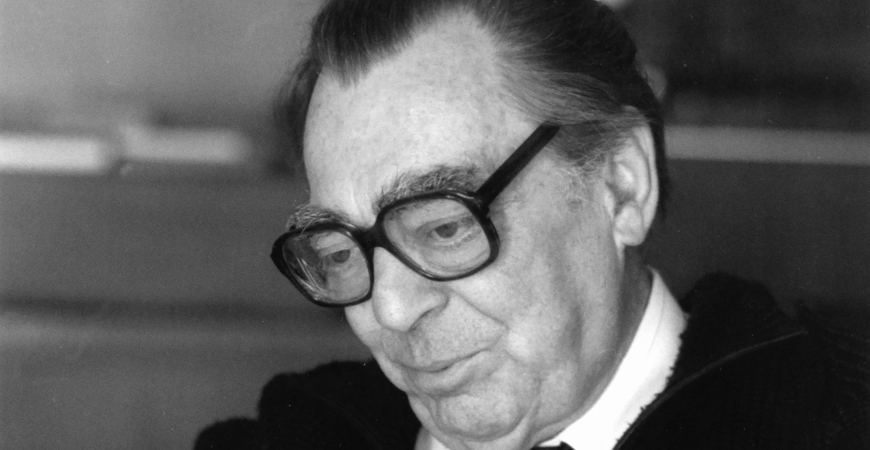The polymath of music
A portrait of András Szőllősy, written by Szabolcs Molnár.
Like his fellow composers György Kurtág and György Ligeti, András Szőllősy was born in Transylvania. He lived in Orăștie (Szászváros) until the age of five, then in 1926 his family moved to Cluj-Napoca. He began his higher education studies in Budapest at the Academy of Music in 1939, and at the same time attended the Hungarian-French faculty at Péter Pázmány University of Sciences. This duality of approach was another sign that he would follow in the footsteps of Kodály, although not in an artistic or aesthetic sense; rather, the Kodály example primarily sparked in him a desire to seek a broad education and solid foundation. The intellectual grounding acquired during his years at university provided a clear-sightedness that accompanied him throughout his life.

Photo: Liszt Academy / Andrea Felvégi
His career as a composer took off relatively late, from the second half of the 1960s, but it is astonishing to see what a prescient vision Szőllősy had even then of the delusions, problems and pitfalls of composition over the following four decades, and with what elegance he avoided them. In happier times, in the period 1947–48, he won a scholarship in Rome, where he attended the master school of Goffredo Petrassi. “Rome had a huge impact on me. It was there that I received a lesson in true democracy. I’m not talking about political democracy now but rather the relationship between one person and another, living together, the rules of respect for one another exercised over millennia,” he once said in an interview. Beside his knowledge, his culture and demanding approach to composition, this sanguine and wise attitude to the hysteria of political systems was the basis of the respect he garnered.
Szőllősy created two totally authentic oeuvres: like Bartók and Kodály, he also made lasting contributions in the field of science. His humanities doctoral dissertation of 1943 was entitled ‘The Art of Kodály’ and was full of new insights; it remained a seminal work for many decades. His research, bibliographies, commentaries and essays after 1948 formed the foundation of the Bartók and Kodály philology over the next half century. If we were to count the number of pieces catalogued with the rigour so typical of Szőllősy (and ignore the over 60 musical accompaniments written for film, theatre and radio), the number would barely top 30: a dozen closely pruned orchestral works of cathartic power, fewer than ten chamber works and a similar number of vocal compositions. But with these ‘few’ works Szőllősy leaves posterity a worthy lesson: never get into a situation where only one work can be chosen above the others. Today it appears indeed true what at one time – partly in good humour – was said about him: “Szőllősy is a composer who writes only great works.”
Szabolcs Molnár


